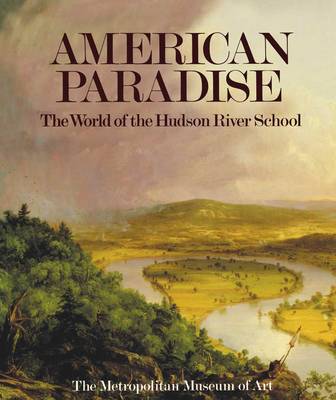The Metropolitan Museum of Art's commitment to American art goes back to its origins, when one of the main reasons for creating the Museum was to provide the city and the nation with an institution that would attract and instruct American artists, as well as acquire their works. Leaders in the New York art world of the 1860s and 1870s were principally landscape painters, many of whom were instrumental in founding the Metropolitan. Among them were John F. Kensett and Frederic E. Church, both prominently represented in this exhibition and publication, and both on the roster of the Museum's first Board of Trustees, elected on 31 January 1870. Kensett served on the influential Executive Committee until his death three years later; the memorial display in 1874 of thirty-eight of his paintings-referred to as the Last Summer's Work-along with three pictures by Thomas Cole, was the first special exhibition mounted at the Metropolitan. Worthington Whittredge and Sanford Gifford, who are also represented in the exhibition and catalogue, were among those deeply involved in the early life of this institution. In 1881, when the Museum organized its first monographic retrospective, it was of Gifford's work. Issued concurrently was A Memorial Catalogue of the Paintings of Sanford Robinson Gifford, N. A., the first of a long line of scholarly books and catalogues published by the Metropolitan.
American Paradise: The World of the Hudson River School is a large undertaking of the Metropolitan's Departments of American Art, and is an integral part of its program to exhibit and explain the best art of our country. Previous to 1987, the Museum mounted major retrospectives of the work of Thomas Eakins, John Singer Sargent, George Bellows, and Winslow Homer, among others. This exhibition and its accompanying book were conceived as a presentation of the art of the Hudson River School and a summary of the most up-to-date scholarship on the School itself. The organizers and authors brought together a number of the finest and most historically important pictures of the School, thereby offering a broad and even-handed survey of thought and critical comment on the artists and their works. Because of the tremendous surge of interest in the Hudson River School (traceable in large part to Paintings of the Hudson River School, the Museum's small but pioneering exhibition held in 1917; to The Hudson River School and the Early American Landscape Tradition, the exhibition organized by the Art Institute of Chicago in 1945; and to the publication in 1949 of M. and M. Karolik Collection of American Paintings, 1815-1865 by the Museum of Fine Arts, Boston) and the consequent recognition of it as the first pivotal art movement in this nation's history, the time was propitious to present to specialists and the general public alike these indisputable masterpieces. [This book was originally published in 1987 and has gone out of print. This edition is a print-on-demand version of the original book.]
- ISBN10 0300200471
- ISBN13 9780300200478
- Publish Date 3 September 2013
- Publish Status Cancelled
- Publish Country US
- Imprint Metropolitan Museum of Art
- Format Paperback (US Trade)
- Pages 368
- Language English
